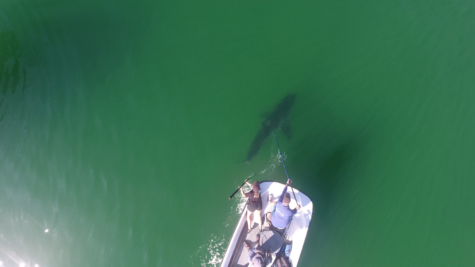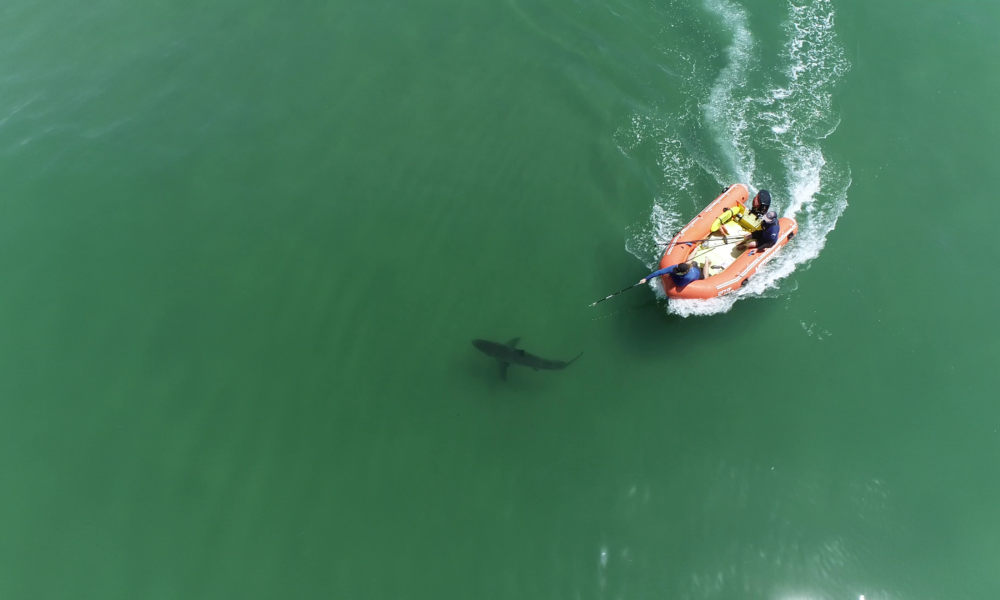Long Beach State’s Shark Lab has reported seeing a record number of sharks off the coast of Southern California despite the lab’s operations being affected by coronavirus safety restrictions.
“The university was shut down in March and so were our operations,” Lowe said. “We had to wait until we developed approved safety protocols for operation, and we were surprised by how successful we were under those restrictions.”
The lab tagged between 12 and 16 juvenile white sharks in 2019 off different beaches in Southern California. This year, Shark Lab Director Chris Lowe and his crew have spotted more than double that number with an all-time high of 38 sharks.
Lowe, who has been studying and tagging juvenile white sharks for over a decade, said that the population of this particular species has been steadily rising.
“We don’t really know exactly why there are so many sharks,” Lowe said. “We just know that over the last 12 years years, we have consistently seen more each year.”
Although Lowe does not know the exact reason for this rapid increase, he believes the sharks’ behavior is linked to the climate crisis and a warmer water temperature.

Aside from warming waters keeping these sharks near the Southern California coast, Lowe feels they have remained in the area due to increased feelings of safety and an abundance of prey.
“It’s an effect caused by climate change,” Lowe said. “Sharks are redistributing themselves and maybe that’s why there are more sharks further north because down south, [in Baja California, Mexico], the other part of the nursery is too warm for them.”
Lowe and his crew typically see peaks of shark activity around mid-July, but in recent years, that peak has shifted toward August and September.
As the lab has been tracking these animals’ movements, results have indicated that the majority of tagged sharks has remained close to the coast of Santa Barbara and San Diego. Lowe said that the crew has been going back to these areas on a weekly basis to these areas throughout the summer and has seen new sharks each visit.
The increase in juvenile sharks spotted, he said, cannot be a result of an increase in births in the region as the size of these particular sharks is larger than the typical size of newborns.
“The juveniles that we’re seeing are in the eight- or nine-foot category. In the past, an average size newborn would be around five-feet long,” Lowe said.
Although juvenile sharks can be as large as eight or nine feet long, Lowe said they still feel safer from larger predators in shallow waters, where they can also find stingrays to feed on.
“We know that there’s plenty of food in these areas, otherwise they would’ve left already,” Lowe said. “We also know that sharks like to eat stingrays, and there are plenty of those.”
As soon as the ocean’s temperature begins to dip below 60 degrees, Lowe said, it’s a cue for the sharks to move south to Baja. At the time of the crew’s sightings, the temperature at the time was between the high 60s and low 70s, he said.
With the help of drone technology, the CSULB’s Shark Lab has been able to track juvenile white sharks off the Southern California coast in an effort to alert lifeguards and beach goers of sharks approaching beaches and shallow waters.
“We’ve flown our drone missions all over Southern California, and we’ve seen a lot of people swimming amongst juvenile white sharks and they are not bothering anybody,” Lowe said.
Lowe said the lab’s footage indicates that although he and his crew are able to view the sharks themselves, individuals on the beaches may not notice them. However, the sharks don’t even bother to get near the individuals.
“With our aerial footage, we can see the sharks,” Lowe said. “But for the most part, people don’t even know they are there.”
Lowe said that his crew will have to wait until the end of winter to determine how much white sharks’ behavior changes their migration patterns.




